Jewels of Bohemia - May 23 - June 6, 2018
(Czech Republic, Slovakia, Hungary)
Part Two, Slovakia
Page Six -
Bratislava continued
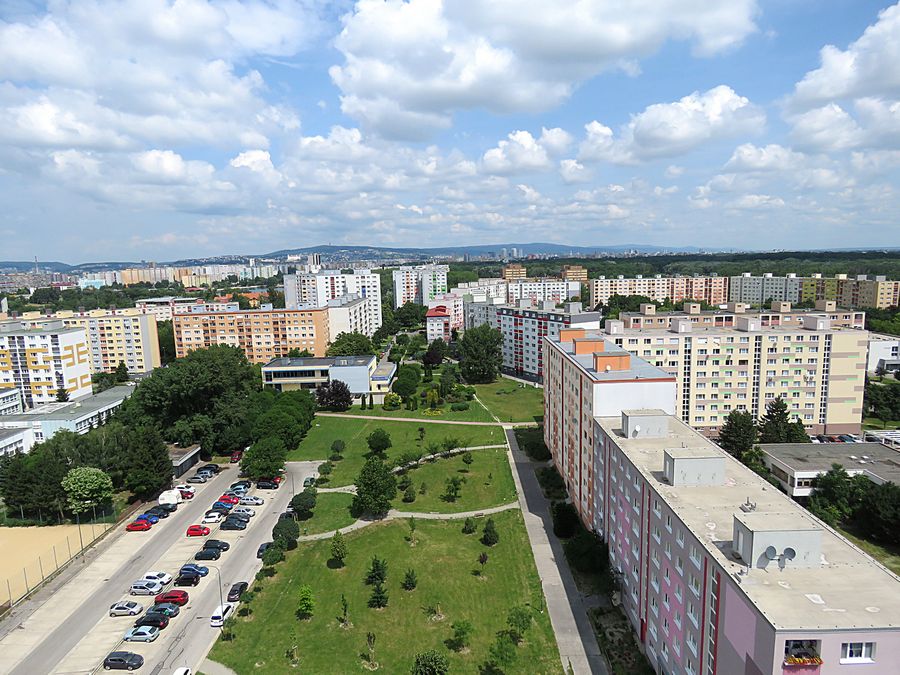
Around 65% of Bratislava locals live in prefab concrete blocks
such as this concrete jungle,
south of the Danube. As one
of Central Europe's largest socialist housing blocks
(from the communist era), The area looks
forbidding, but the proximity of these blocks to the main city
(and improved public
transportation) make them
increasingly desirable places to live.
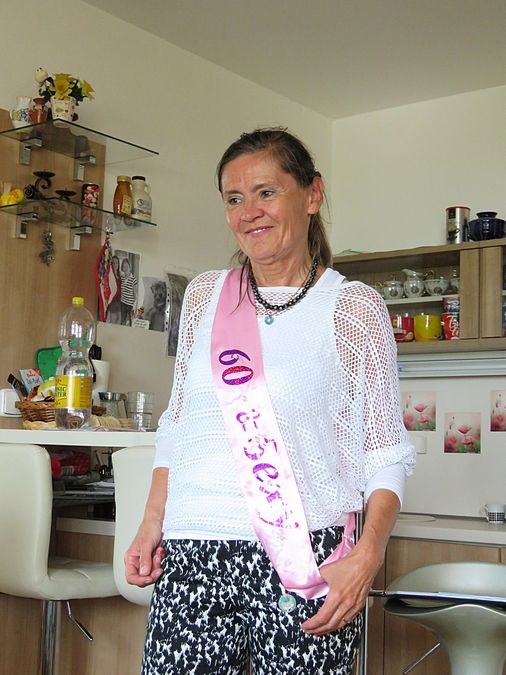
The group split into two, each to visit a home in one of the
prefab housing projects.
Our hostess proudly exhibits
for us her daughter's recent birthday gift. She was a very
warm, welcoming, and enthusiastic person.
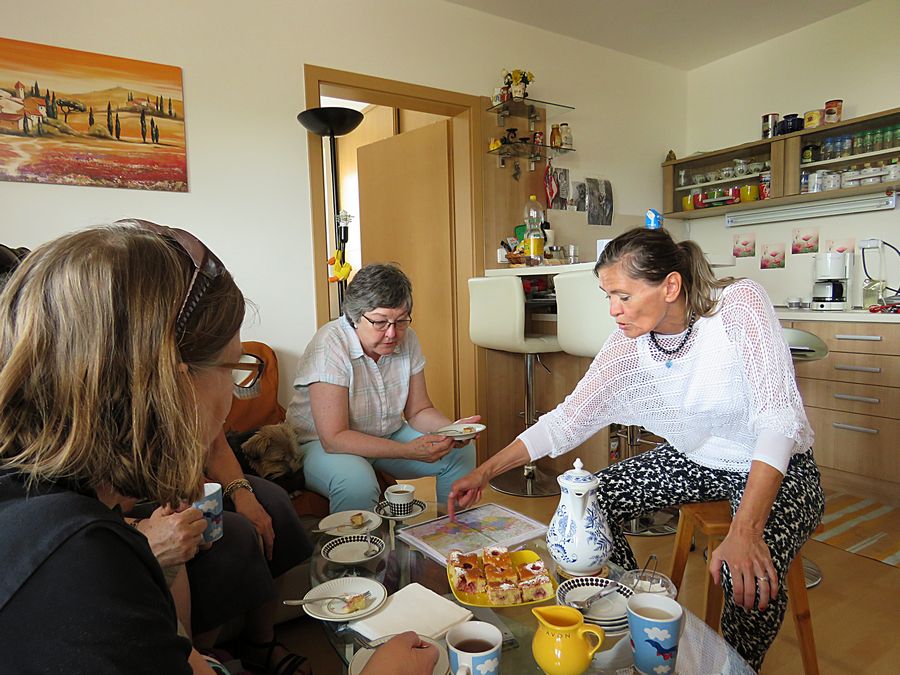
Our hostess talking about her country and her life in
Slovakia in the sitting and
kitchen area of her unit.
The other room in her home was the bedroom. You can
see the door to the bedroom in the photo.
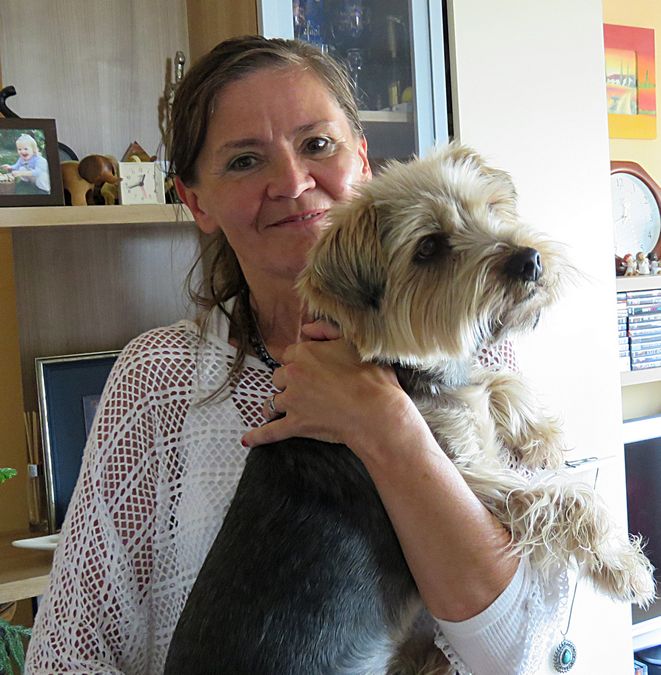
Saying goodbye to our hostess and her beloved dog.
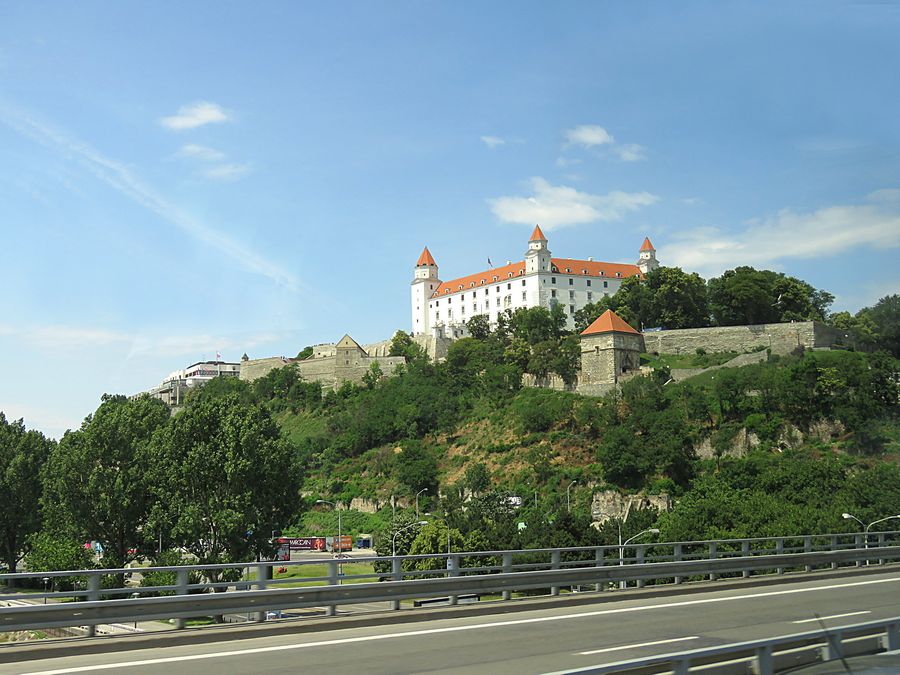
Bratislava Castle from the UFO (New) Bridge
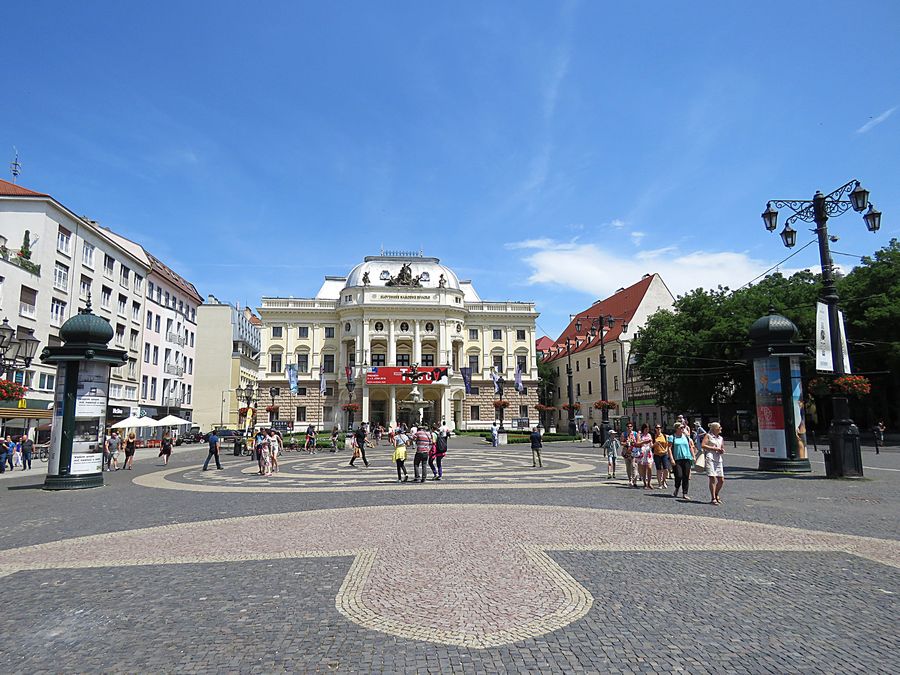
The Old Slovak National Theater building, located by the
Hviezdoslav Square, the Neo-
Renaissance building was
built in 1885–1886 during the time of Austria-Hungary.
In 1920 it
became the Slovak National Theater. Today
it has performances of opera and ballet. There is a
new building that has ballet, opera, and drama performances.
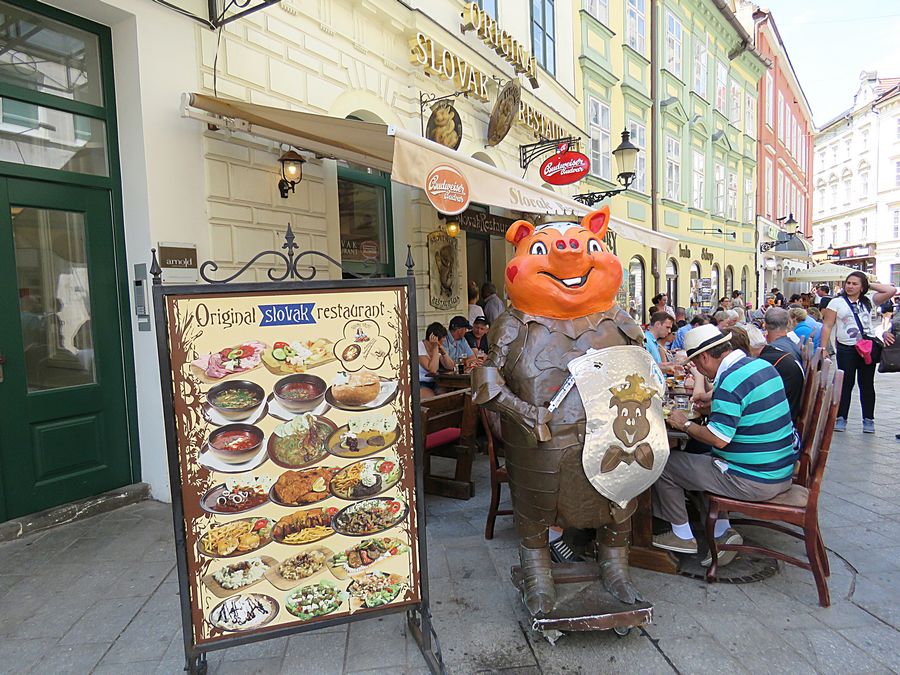
Slovak restaurant in Bratislava.
Note that the restaurant is selling Budweiser Budvar beer.
We visited a Budweiser
Budvar brewery in the Czech Republic.
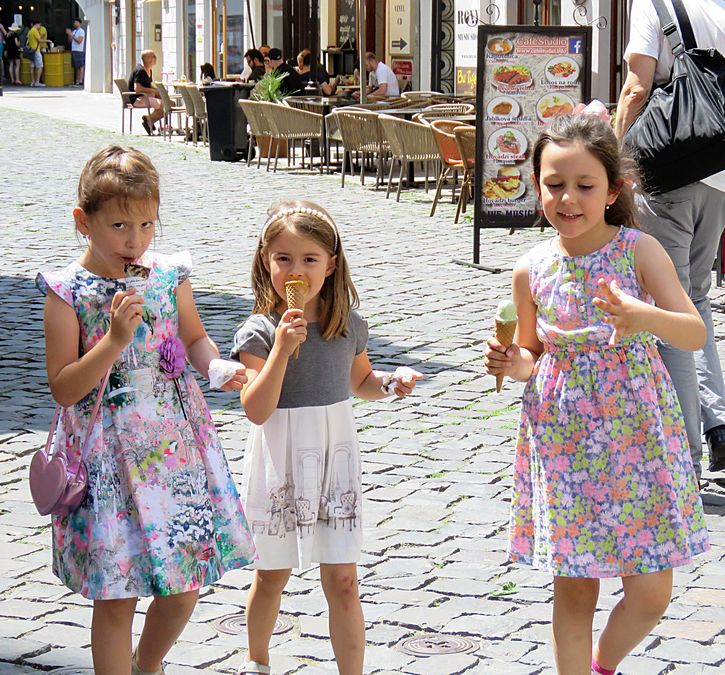
3 Slovak kids enjoying ice cream in Bratislava
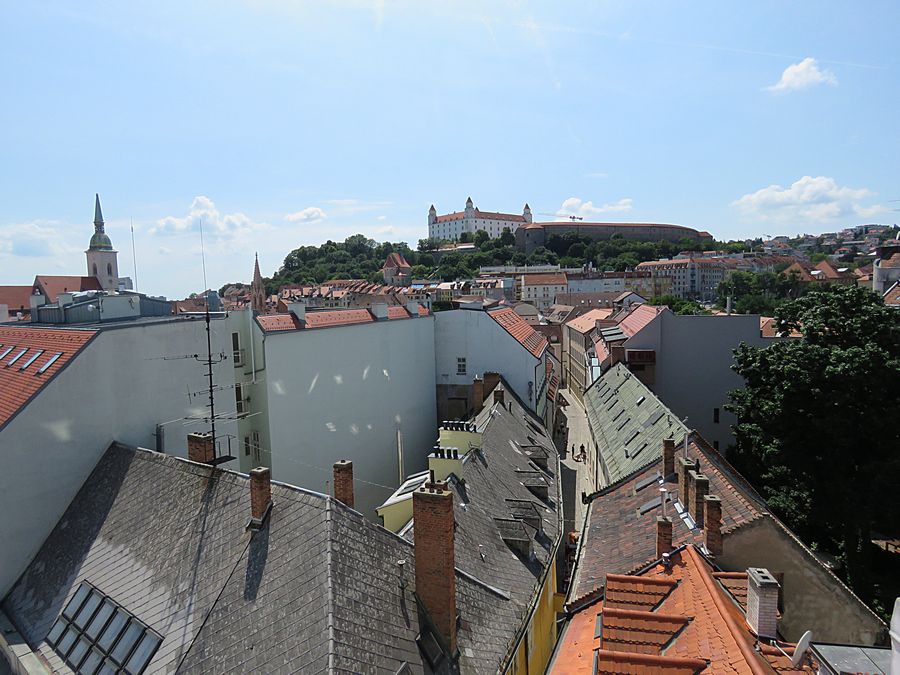
View from Michael's Gate in Bratislava
of part of the Old Town and the Bratislava
Castle. You can climb past the five small stories of
medieval
weaponry in Bratislava's
only remaining gate for old-town views from the top.
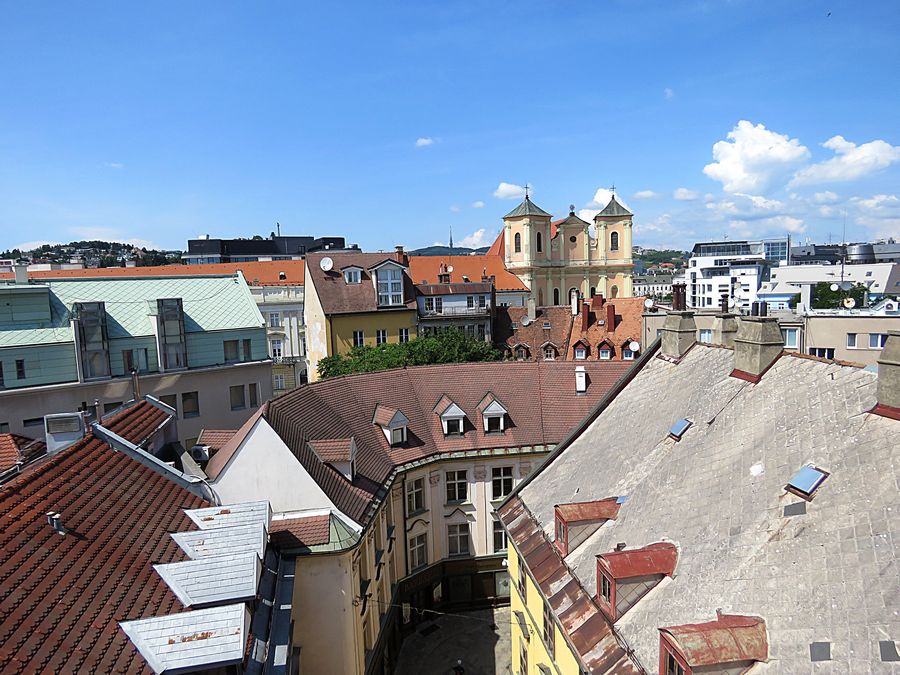
Old Town area from Michael's Gate
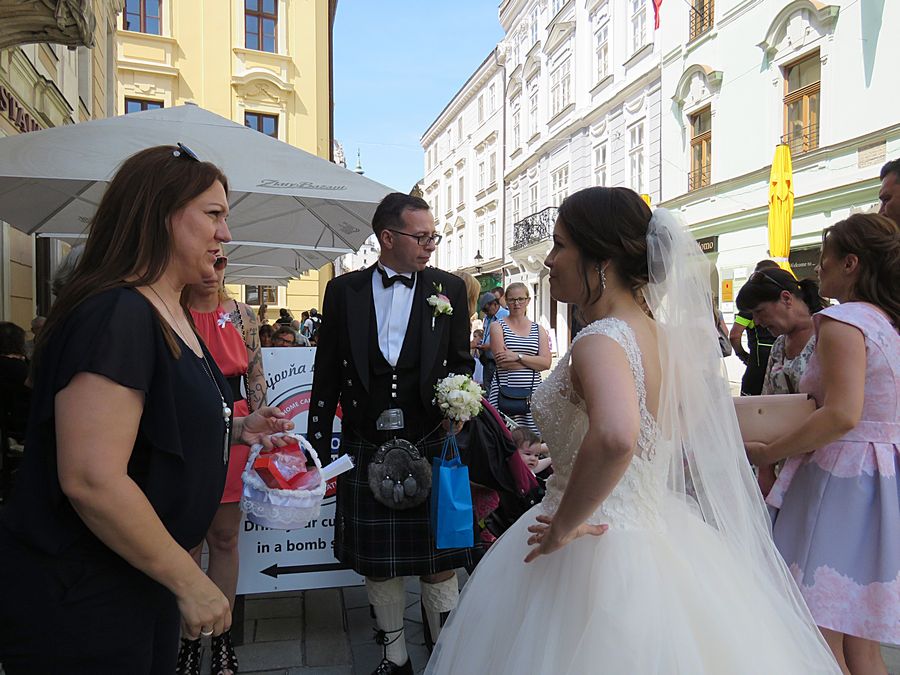
We came across a number of weddings.
The wedding couple is in the center of the
photo, about to enter a restaurant.
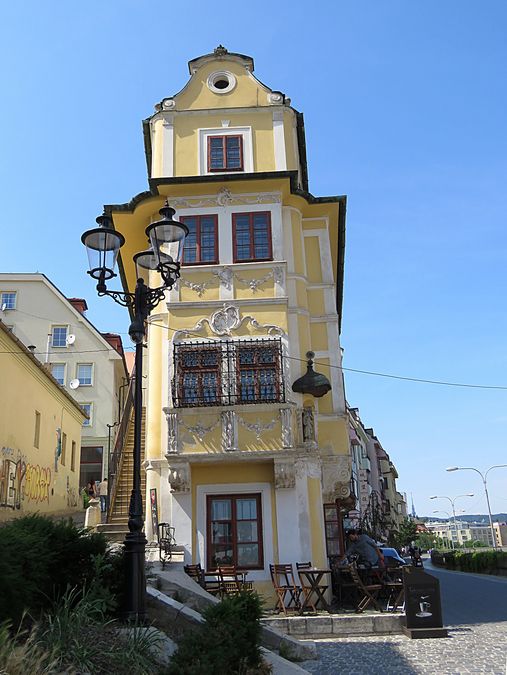
Museum of Historical Clocks in the House of the Good Shepherd.
The House of the Good Shepherd is a narrow, Rococo-style
building in Bratislava,
located in the Old Town
below Bratislava Castle. It was built in 1760–1765 by a notable
Bratislava master-mason. The townhouse was constructed for
a local merchant.The lower
part of the building was used for
commercial purposes, the upper part for living. It is one of
the few buildings in the area below Bratislava Castle to retain
their original state, mostly due
to the demolition of much
of the Jewish quarter in the 20th century.
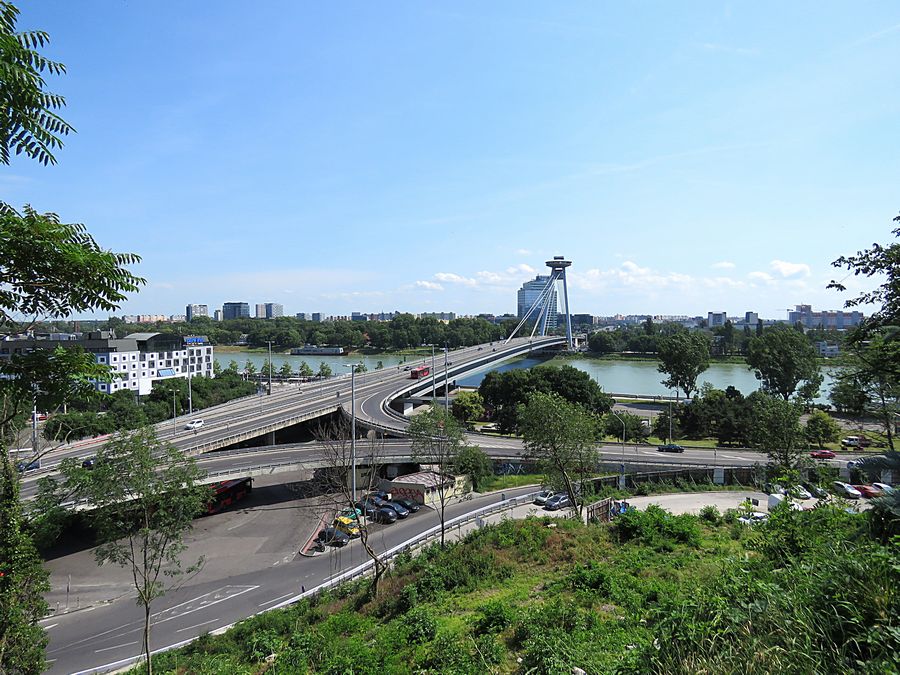
View of the UFO Bridge and the Danube River
while I was walking up to see the
Bratislava Castle, during some free time.
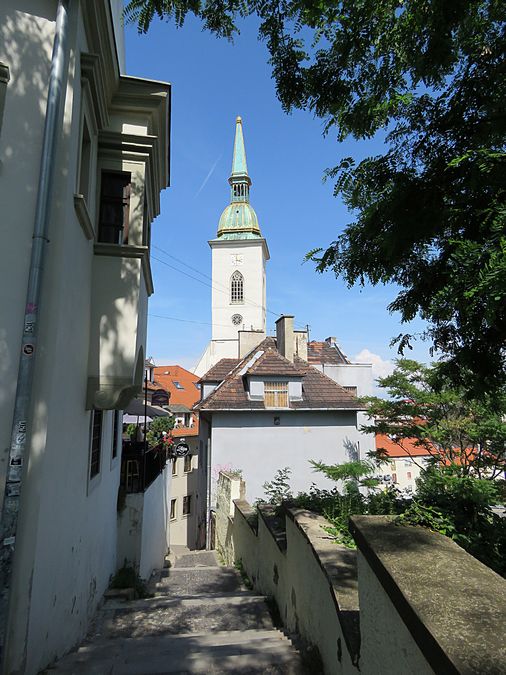
Looking back at St. Martin's Cathedral
while walking up to Bratislava Castle.

View of old town Bratislava in the foreground,
the Danube River, and the modern
part of the city behind old town and across the River,
as seen from Bratislava
Castle.
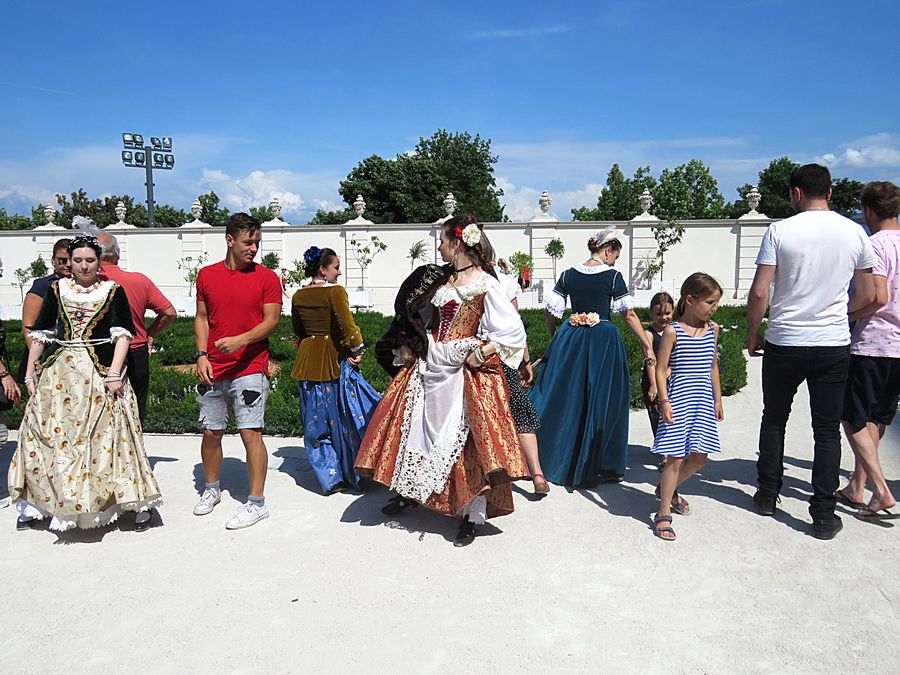
In the gardens of Bratislava Castle, I came across
a special event, where
tourists/locals were being taught
medieval dances by women dressed up in
traditional costumes.

The dancers
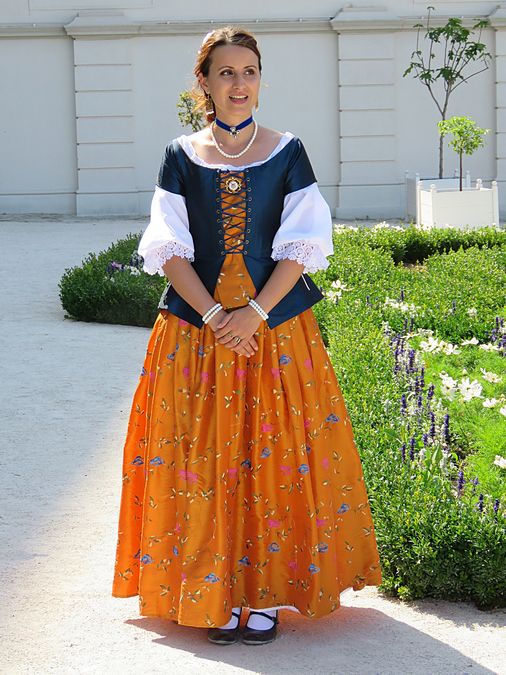
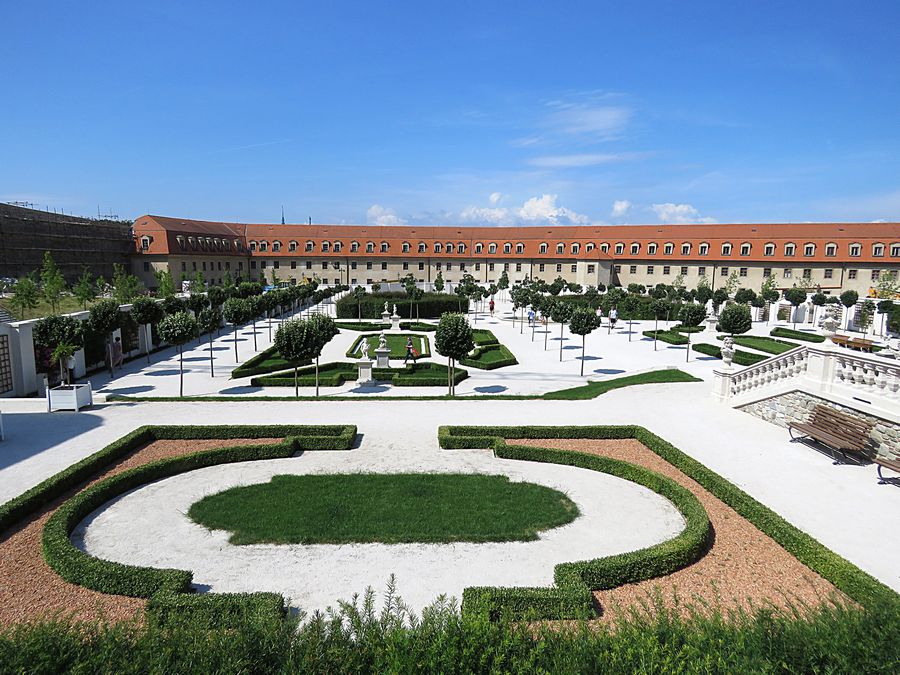
Bratislava Castle Garden. The Castle was first mentioned in 907.
It was at a strategic
location on the Danube, at the
crossing of trade routes. Fortified in the 11th & 12th
centuries, it was rebuilt in Gothic style in the 15th century,
and in 1552-60 was
remodelled into a Renaissance residence.
It burned down in 1811 but was rebuilt
in the 1950s.
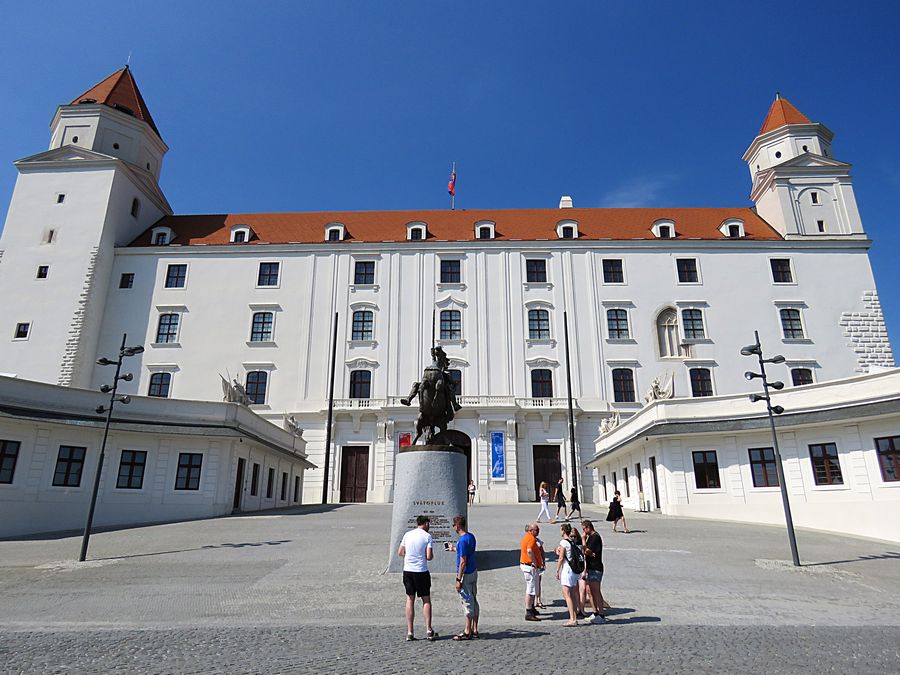
Bratislava Castle entrance. The castle building includes 4 towers
(one on each corner)
and a courtyard. The largest and tallest
tower is the Crown Tower on the southwest corner.
The 154 ft tower dates from the 13th century and for approximately
200 years beginning in
the mid-1500s housed the crown jewels
of Hungary. The exterior walls and inside corridors
contain fragments of old Gothic and Renaissance construction elements.
Behind the entrance,
is an arcade corridor leading
to a large Baroque staircase which leads to the exhibitions of
the Slovak National Museum on the second floor. The
west wing of this floor houses the 4
halls of the Treasure Chamber (opened in 1988) with a
collection of the most precious
archaeological finds
and other objects of Slovakia. The third floor houses the exhibition on
the History of Slovakia. The first floor in the south wing
of the building houses rooms of the Slovak parliament ---
the National Council of the Slovak Republic - including furnishings
from the 16th century. The northern wing of the building, the former
Baroque chapel, houses
the Music Hall in which concerts are held.
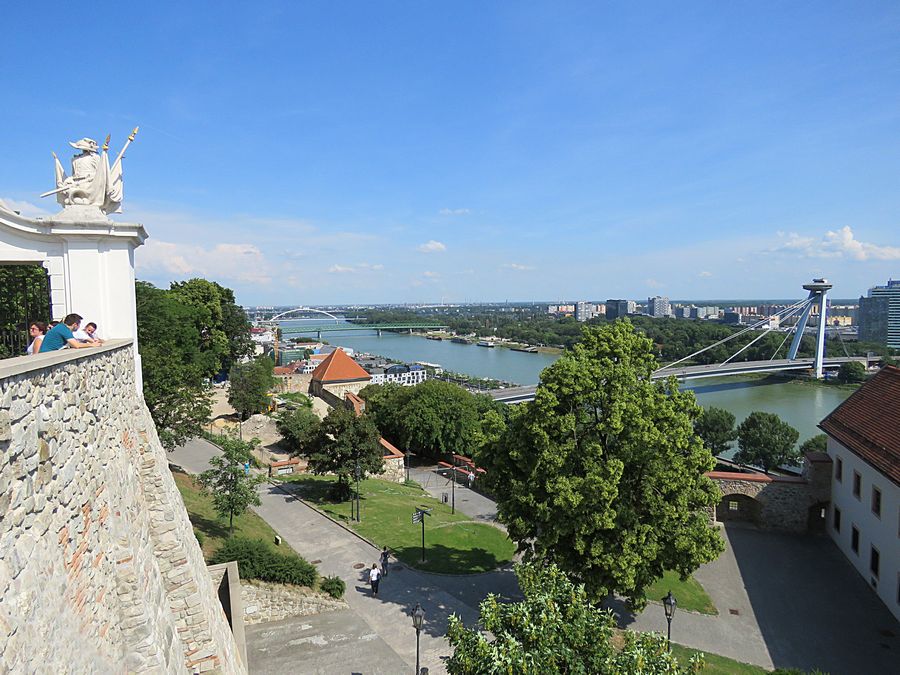
The Castle stands on an isolated rocky hill of the Little
Carpathians directly above
the Danube River in the middle of
Bratislava. Because of its size and location, it has
been a dominant feature of the city for centuries.
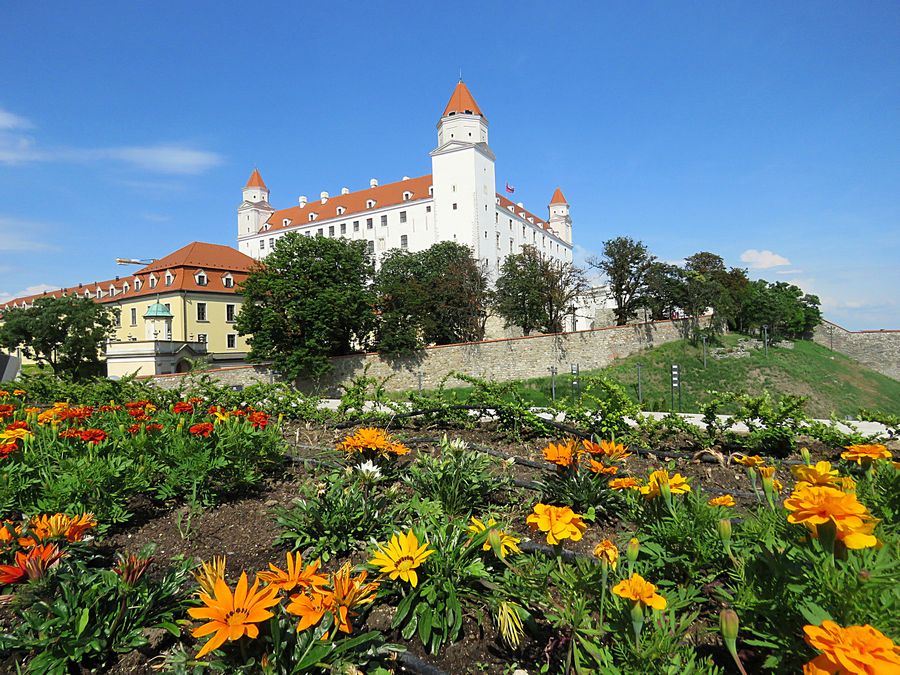
View of Bratislava Castle from Slovakia's Parliament building
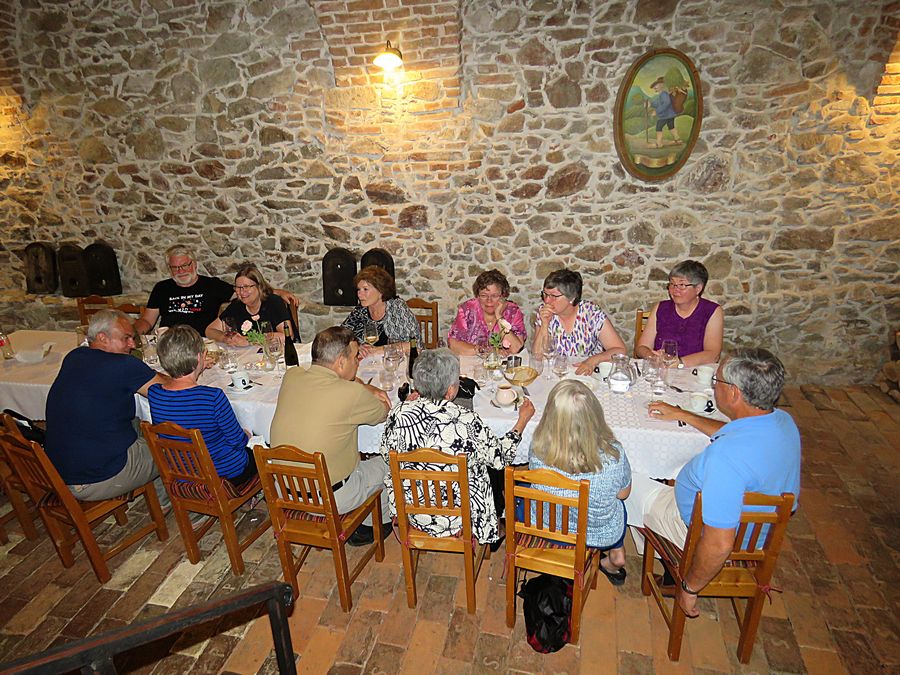
The area around Bratislava is known for quaint villages
and the vineyards on the
fertile slopes of the Little Carpathians.
We journeyed outside of Bratislava to
enjoy dinner and wine-tasting in the cellar of a local vinter.
Link to Page 7 - Part Three - Hungary
Pat's Home Page